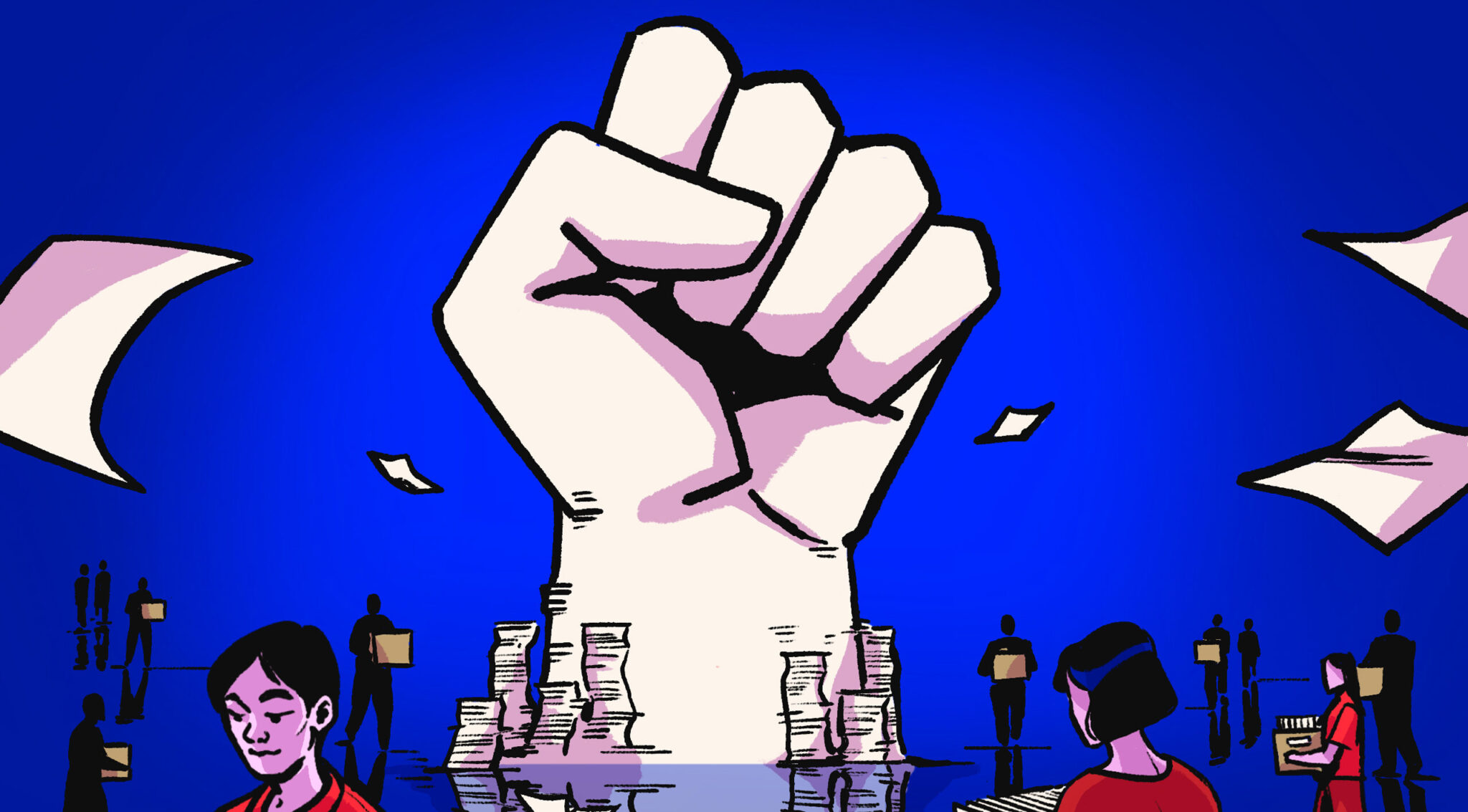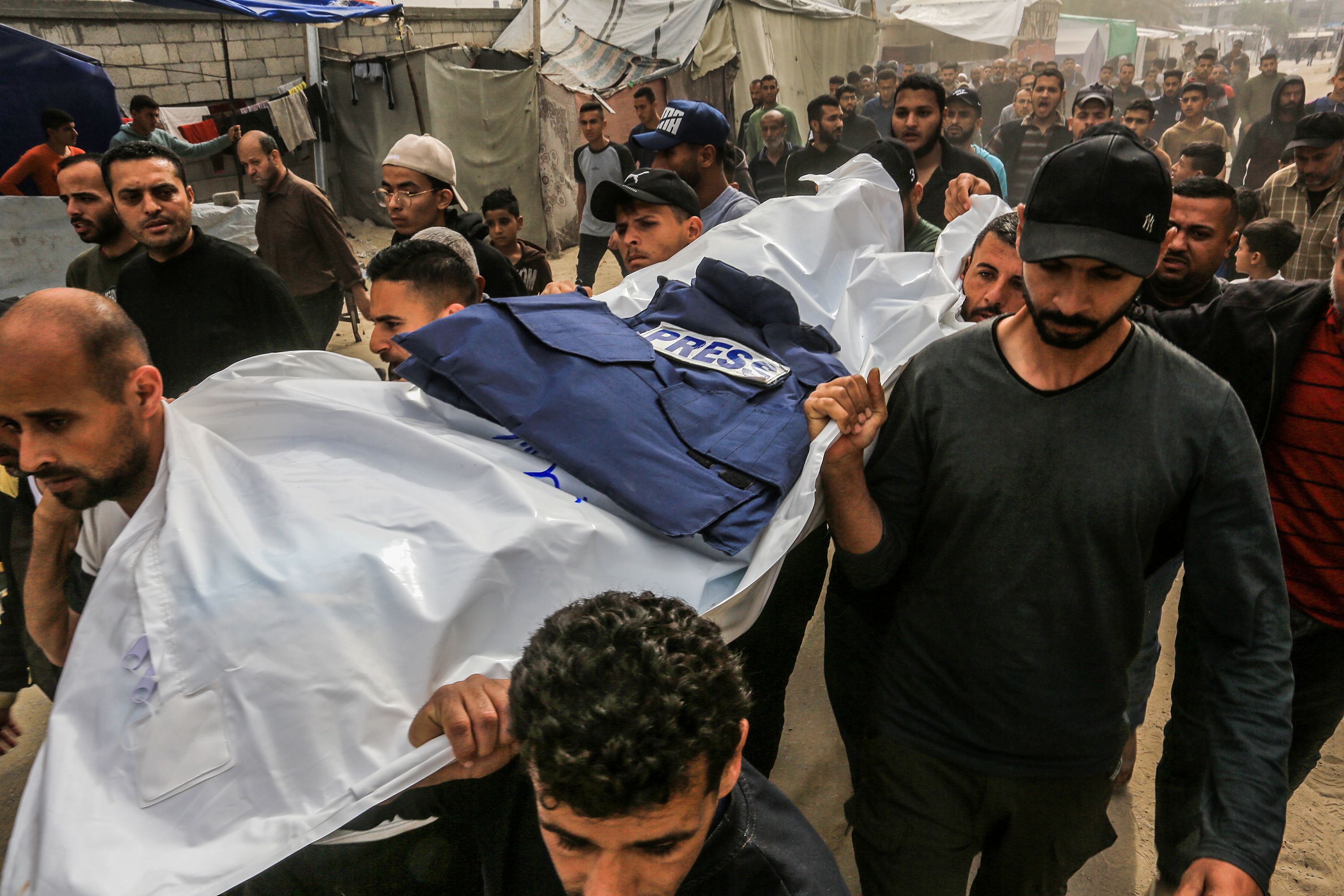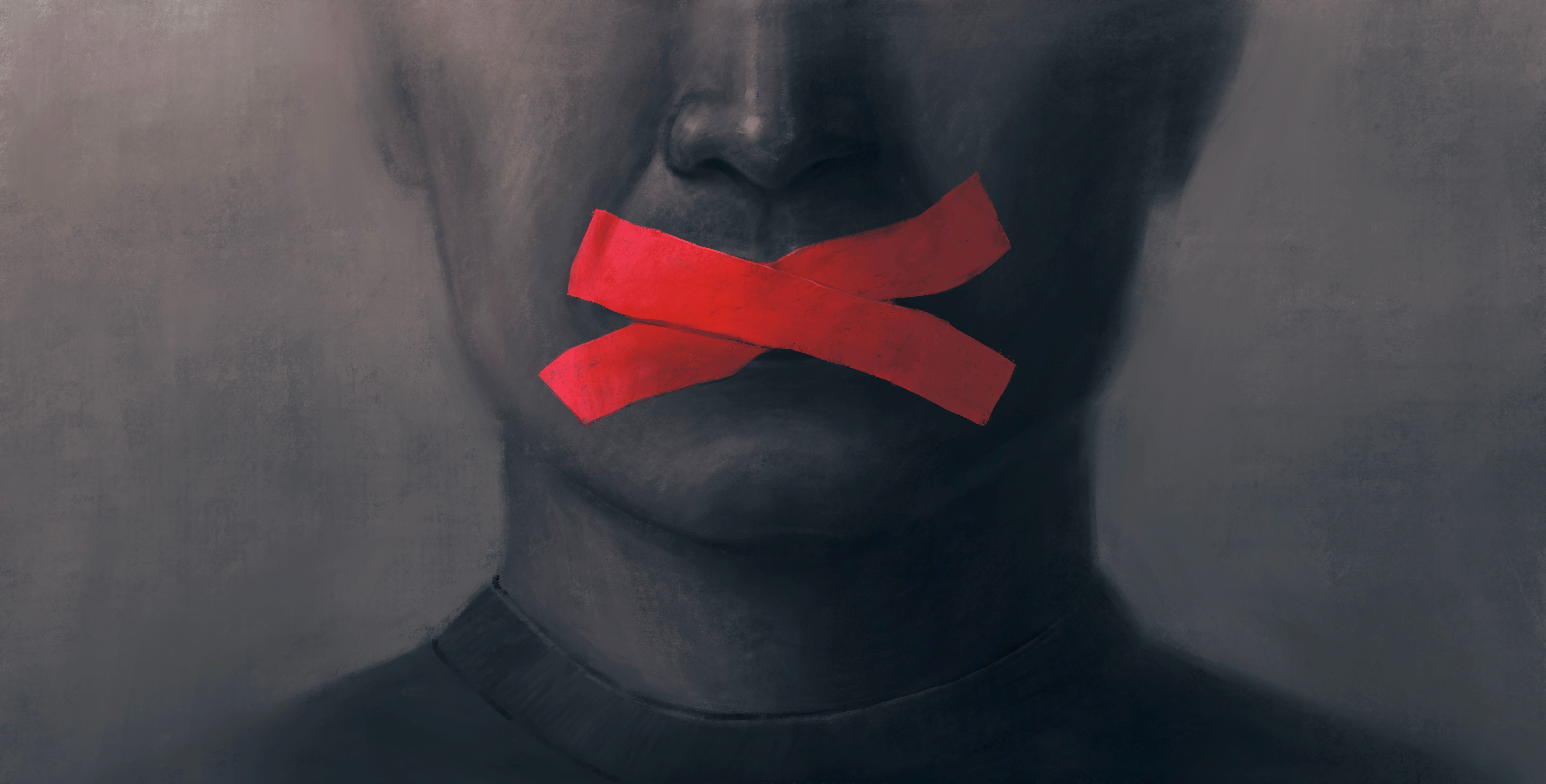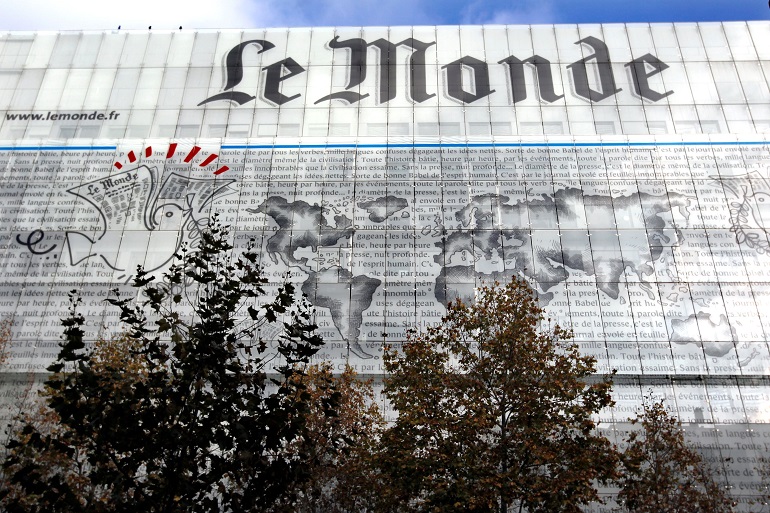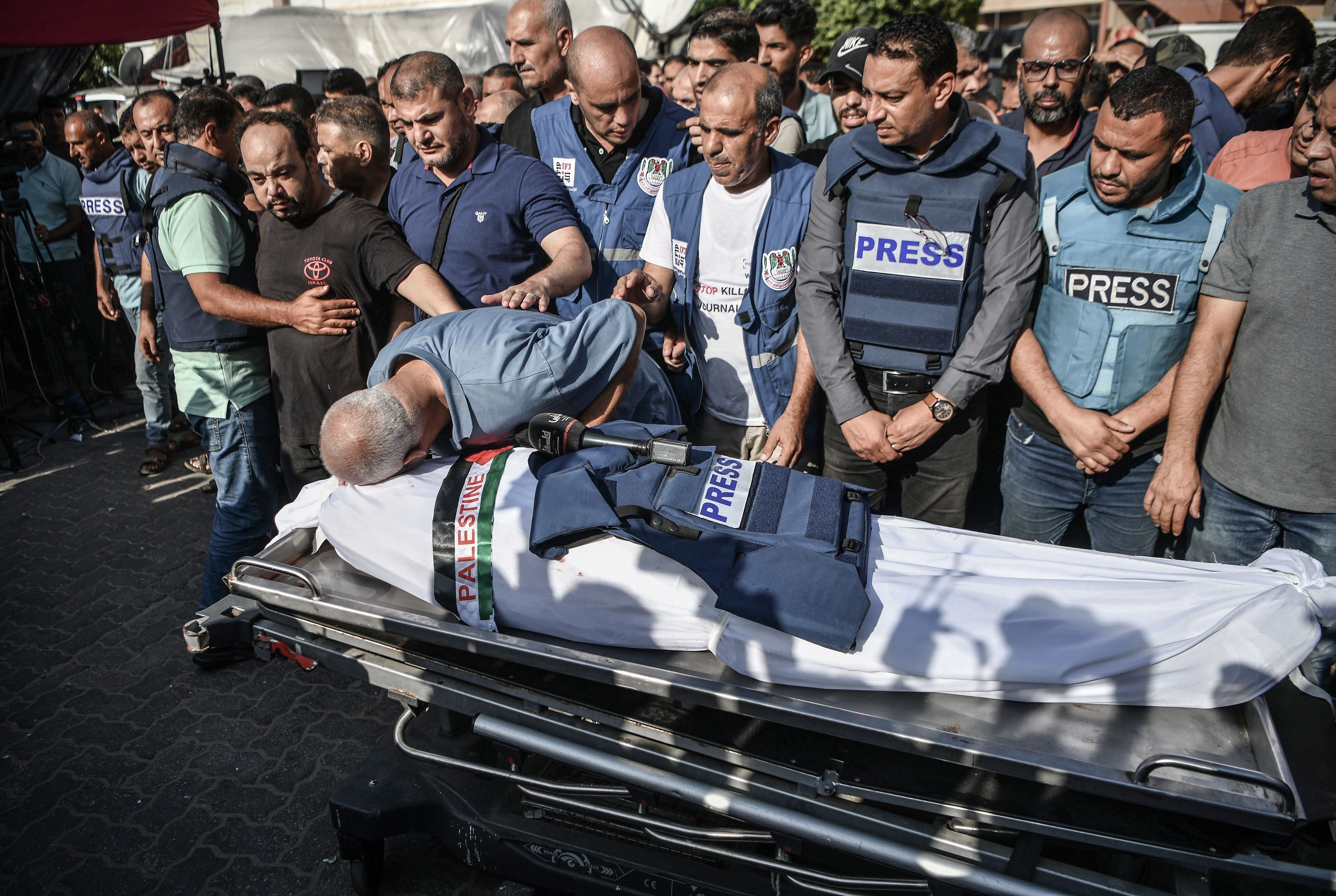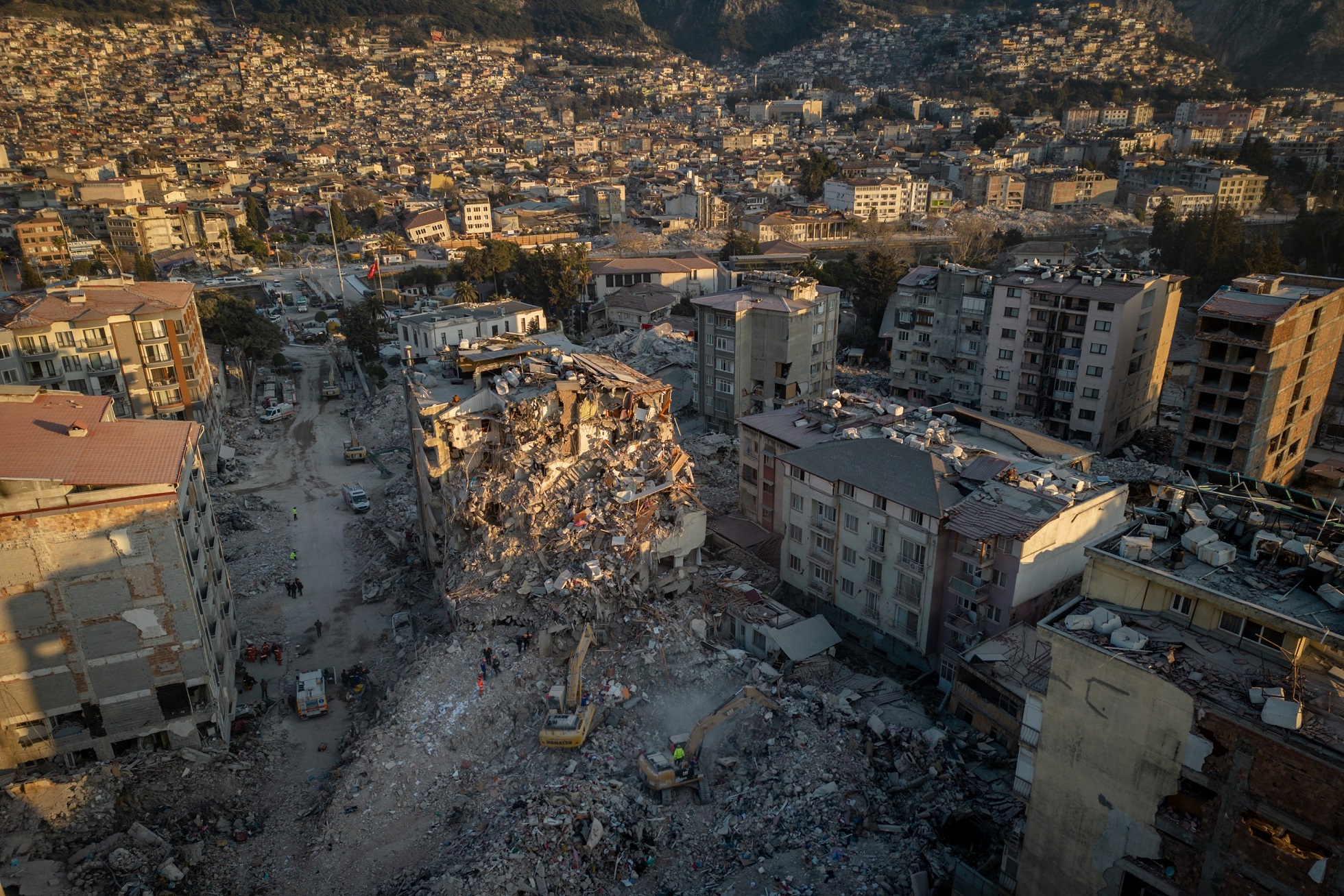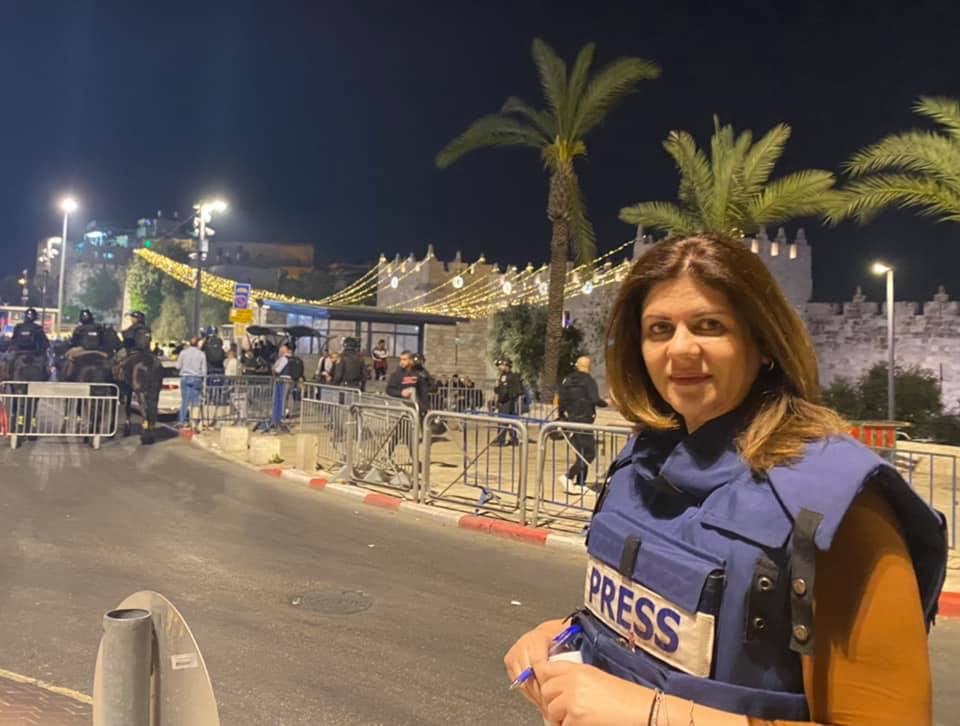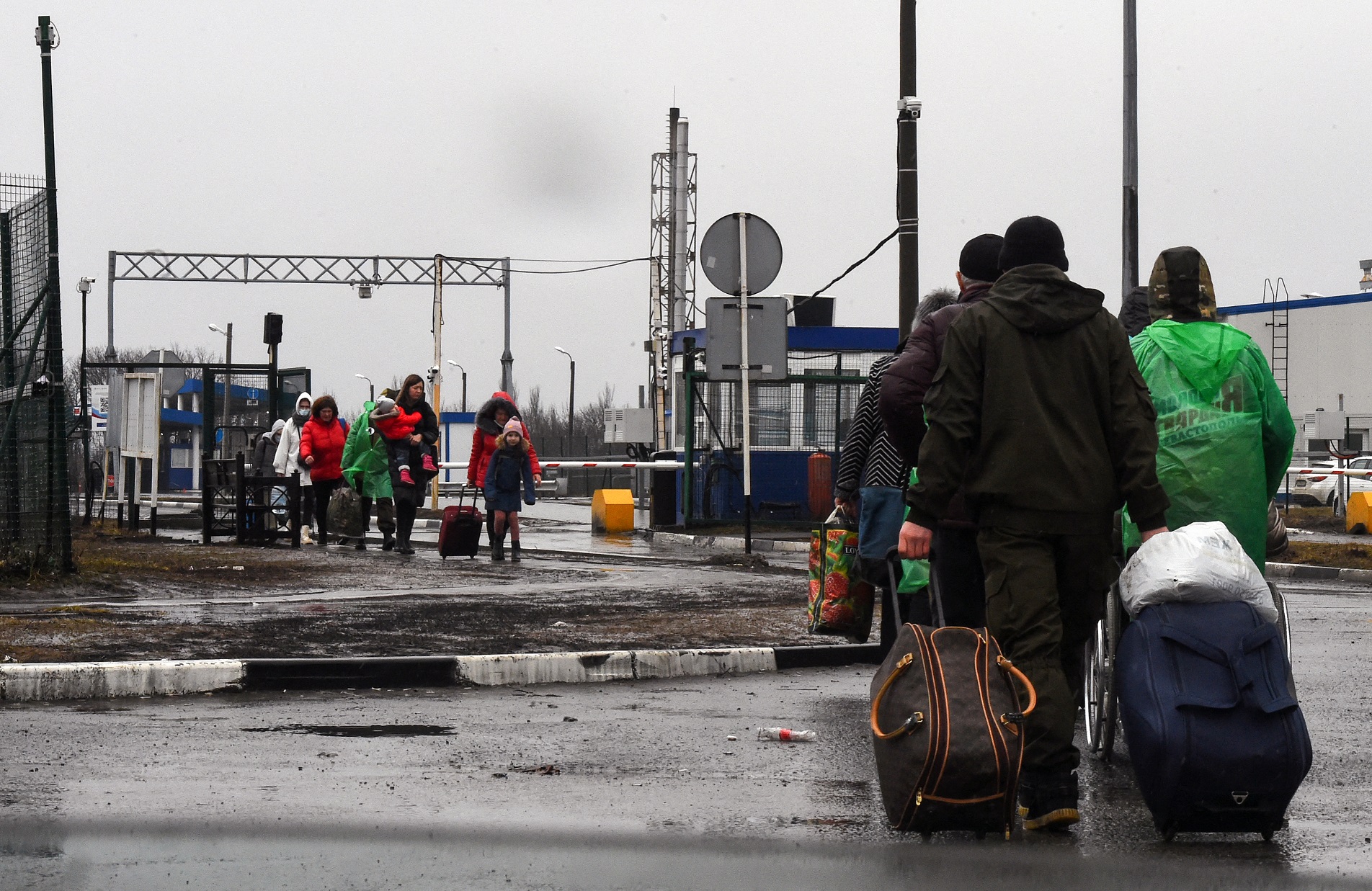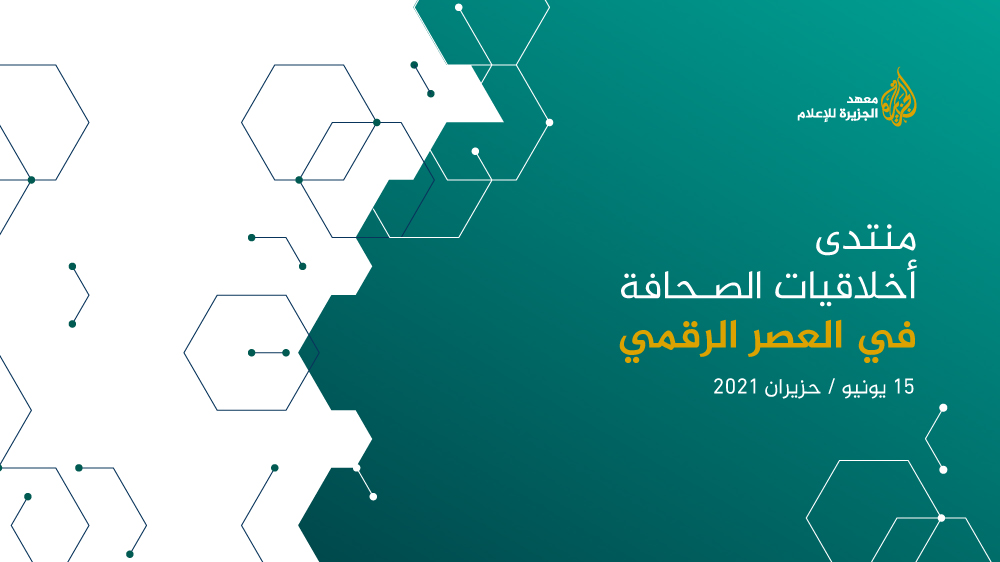In the Philippines, archivists fight to preserve evidence of the country’s bloodied past, in hope that it will provide lessons for the future.
Leafing through documents at the office of the Human Rights Violations Victims’ Memorial Commission, executive director Carmelo Victor Crisanto shifts his attention to the television. Two clips from a recording created by the commission to highlight its archiving work appear on the screen.
First, activists read out narratives from victims of martial law in the Philippines. Then, on the screen appears a rendering of the Freedom Memorial Museum – a planned gallery, shaped to resemble a clenched fist, that is to house exhibits documenting the brutal regime of Ferdinand Marcos.
For now, while the museum has yet to take shape, bloody memories of martial law are confined to cardboard boxes stacked on shelves at the commission’s offices. What lies inside are testimonies from the victims of one of the darkest periods of Philippine history.
And with the dictator’s son, President Ferdinand Marcos Jr., now holding the country’s reins, the task of safeguarding history has never been more urgent.
“There are a lot of gaps in our history,” Crisanto says. “These gaps can be filled by social media and their version of what happened. Today, with cellphones and the strength of social media, these gaps could be filled by different stories. That is the enemy of the memorial commission. The outright lies and changes to history.”
By “their version,” Crisanto means narratives promoted by the former dictator’s family. Five years after the Philippines deposed Ferdinand Marcos in the bloodless revolution of 1986, his wife, Imelda Marcos, and their children returned to the Philippines. They immediately launched a political comeback, taking seats in congress from the early nineties, until Marcos Jr. finally won the presidential election in May 2022.
There are a lot of gaps in our history. These gaps can be filled by social media and their version of what happened. Today, with cellphones and the strength of social media, these gaps could be filled by different stories. That is the enemy of the memorial commission. The outright lies and changes to history.
The family have used their positions to downplay the crimes of the Marcos dictatorship. Before becoming president, Marcos Jr. even suggested revising textbooks in schools that discussed martial law, although he eventually backpedalled on the idea once he had won the presidential election.
27 Years in the Making
Over the three decades during which the Marcos family were gradually re-establishing themselves, the Philippine government enacted numerous policies aimed at bringing justice to those persecuted under martial law, including creating a government agency to chase the dictatorship’s ill-gotten wealth. But it took until 2013 for then-President Benigno Aquino III to establish a government mechanism to compensate victims of martial law.
The Human Rights Claims Board, a government agency responsible for handing out reparations to victims of martial law, was created at the same time as the Human Rights Violations Victims’ Memorial Commission.
Government figures show that 75,103 individuals appealed for reparations, yet during its five years of operation, the board approved compensation to only 11,103 victims. Amnesty International estimates that the Marcos Sr. administration imprisoned 70,000 people, tortured 34,000 and killed 3,240 – many under extrajudicial means.
Since the Human Rights Claims Board ceased its work in 2018 – due to a deadline imposed by the law – the task of memorialization is now solely in the hands of the Human Rights Violations Victims Commission. The commission collected all documents from the claims boards for safekeeping, intending to archive and then eventually make them available for public research.
“No matter how much the government pays, it will never erase the pain families experience,” Crisanto says. “This is why the law stated that those who receive compensation from the Claims Board should be placed in the museum and all lessons from martial law be given to the youth.”
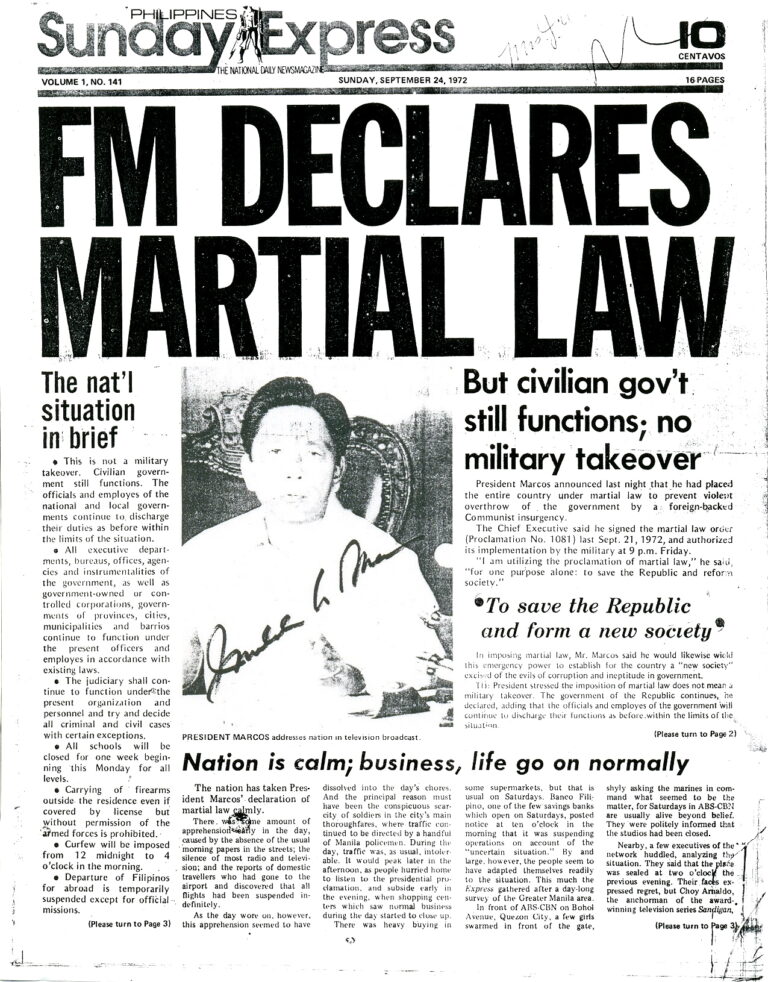
Beyond a Museum’s Four Walls
Preserving and honoring the memories of the victims of martial law demands a combination of approaches spanning memorialization, education and investigation.
The written accounts of survivors received by the Human Rights Claims Boards are stored in boxes labeled with different numbers indicating the intensity of the repression committed against the victims. They will eventually be exhibited at the Freedom Memorial Museum.
Many things are unknown, many things have fallen to government propaganda. So those who have not experienced this may be hearing the propaganda for such a long time. For such a long time they think it is already true.
The museum is set to be built on land belonging to the University of the Philippines – a stronghold of student activism under martial law – which was transferred to the commission in December 2024. But the battle against misinformation and historical revisionism entails taking the memories of the past beyond the four walls of a museum.
This is why the commission has trained teachers to improve how martial law is discussed in classrooms. Crisanto says censorship has resulted in information failing to reach the current generation. But he believes teachers can spark young people’s interest in history, and has recommended including the history of martial law on school curriculums.
“Many things are unknown, many things have fallen to government propaganda,” Crisanto says. “So those who have not experienced this may be hearing the propaganda for such a long time. For such a long time they think it is already true.”
During the COVID-19 pandemic, the commission launched a series of online discussions where instructors from high schools and universities shared their teaching strategies with colleagues. The commission also increased its focus on battling disinformation online, where Marcos family supporters mythologized Marcos Sr.’s presidency as an age of prosperity – in fact, studies show that many people were plunged into poverty during his rule, as the wages of farmers and workers lagged far behind the rapidly increasing prices of essentials.
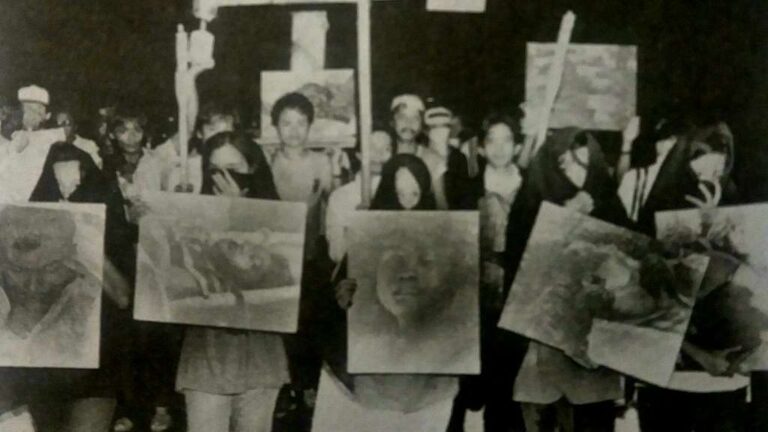
“It was a battle for memory. Students had no textbooks and references so they would look into the internet. Maybe they would stumble on Wikipedia so we concentrated some of our efforts on creating the correct pages,” Crisanto explains.
Filling the Other Gap
The Memorial Commission isn’t alone in working to preserve historical records from the period of martial law. Long before the Philippine government legislated to create an independent archiving body, many survivors and civil organizations had come together to publicly remember the victims of the dictatorship.
One of the earliest collectives, Bantayog ng mga Bayani, has been shedding light on the life of martyrs under the dictatorship since the regime fell in 1986. Bantayog runs a museum in Quezon City documenting the brutal conditions under martial law, as well as commemorating the lives of those who fought the dictatorship.
Near the gallery, a wall stretches across the grounds of the memorial center. Etched into the facade are the names of those Bantayog considers martyrs and heroes who contributed to the downfall of the regime.
Today, responsibility for recognizing these martyrs first falls to Bantayog’s researcher, Karla Ipong. Ipong’s father, an activist from Mindanao who worked within farming communities, died when a storm destroyed the boat he took to travel to another city. He is now recognized in the Wall of Remembrance. Ipong started working for Bantayog in 2014. Her job involves receiving the names of candidates to join her father on the wall.
Anyone can nominate names for Bantayog. Former colleagues of martial law martyrs often do so, and Bantayog researchers can put forward nominations, too. Research then begins into each name on the list of candidates. For Ipong, this involves building connections and networks that could provide her with information and documents related to the candidates.
“You need to have friends from different groups, especially in organizations composed of martial law survivors, or people’s organizations that are organizing in different areas,” she explains.
But not everyone is willing to share their stories with Ipong. She understands that survivors and victim’s families are still reeling from the trauma of the dictatorship. Gaining their trust can be a slow process – but even finding the families of those who died under martial law can be a challenge. Ipong says searching Facebook has helped. She also tracks nominees’ former colleagues, especially if they worked for activist organizations.
The feedback we were getting was that it was important to come back to history and learn from the labor movement.
When they have completed their interviews, Bantayog’s researchers write comprehensive reports and submit their findings to a committee. Once approved, a name is finally etched into the Wall of Remembrance. The research team’s findings are also published on the memorial website. Interview transcripts and other documents gathered are archived and stored at Bantayog’s museum.
While researchers engage in rigorous study to compile and preserve in writing the stories of martial law martyrs, Bantayog’s archivists ensure that the fruits of this research are protected and presented to the public. They sort through documents ranging from newspaper clippings to old books published during martial law. They carefully clean the materials before encasing them in non-acidic plastic to keep dust from accumulating.
Josefina Galleon, one of the museum’s archivists, sorts donated materials into different categories. In a storage room, documents are put into boxes. Profiles of nominated candidates completed by Bantayog for the Wall of Remembrance are placed on the shelves. “You have to check the articles Bantayog could use,” Galleon says. “It should be related to martial law. Once we collect, store and stamp the documents, we place it in a folder and then a box.”
The collections include martial law-era university memos and school policies. Donated books, many first editions by authors who completed their works under martial law, are stored in the museum’s library. Galleon says most of their documents date from the 1970s to the last leg of the dictatorship in the 1980s.
Bantayog relies mostly on donations and grants from various organizations, and is short of funds. During the typhoon season, leaks in the roof have forced the museum to close, and termites almost destroyed a section of the archives. Still, Bantayog continues with their mandate: making sure that the people who fought the dictatorship are not forgotten.
'Maybe We Should Go Back to History'
While Bantayog and the Memorial Commission shelter traces of lives lived and lost under law documents, sectoral and community organizations have also secured vignettes from the dictatorship.
Following the 2022 general elections that brought Marcos Jr. to power, a group of labor activists formed the Philippine Labor Movement Archives to push back against potential erasure of the history of repression of workers’ rights during martial law, when the Marcos regime arrested many striking workers and labor leaders.
Iggy Sandrino of the Ecumenical Institute for Labor Education and Research says left-leaning workers and trade unions largely voted against Marcos Sr.’s son in 2022. But when he became president, the strategies labor organizations used during marital law suddenly seemed intensely relevant again. And so the archive was created to recall actions that had gone beyond the ballot box to protect democracy. But they had to act fast. “We did not foresee the complete return to power of the Marcos family,” Sandrino says.
Just weeks after the 2022 general elections, volunteers for the initiative began to catalog their inventory of archival materials. The first documents the collective had to save were files donated by Kilusang Mayo Uno, one of the Philippines’ largest trade unions, which rallied against the rule of Marcos Sr.. The Labor Movement Archive soon called for more volunteers to open the initiative to the public. Many who joined the group had archiving experience. Among the files they worked on are a series of photographs documenting working-class mobilizations against the dictatorship, as well as Kilusang Mayo Uno video tapes and protest materials.
Tel Delvo, a community journalist, was one of the first volunteers. He says the initial files they organized were stored in old cabinets and boxes. Volunteers sorted them by topic and year. They are now stored at the Balai Obrero Foundation – the labor advocacy organization on whose premises the Labor Movement Archives operates.
Delvo estimates that the archive now contains over 11,000 items related to the labor movement under martial law – which makes it a struggle to contextualize all the materials and explain their significance. Yet many of the photographs and other documents restored by the Labor Movement Archives have been scanned, reprinted and included in exhibits. Activists have even used images reproduced from the archives on banners protesting the current government.
“We decided to archive the materials so they could be used in the present,” Delvo says, pointing out that the new generation of workers organizing in trade unions has no experience of large-scale mobilizations like the protests launched during martial law. “The feedback we were getting was that it was important to come back to history and learn from the labor movement.”
Drug War Tally
Philippine archivists are not only working to preserve data on the martial law era. Other initiatives are gathering records connected to lives lost more recently as a result of the war on drugs waged by then-President Rodrigo Duterte in 2016.
The Dahas Project is a program of the University of the Philippines’ Third World Studies Center. Here, researchers browse online media reports to compile a database of drug-related killings. During Duterte’s six-year presidential term, over 12,000 people were killed in his drug war, according to police estimates
Dahas, meaning “violence” in Filipino, started counting the dead in 2018 as an “academic exercise” exploring methods to provide a comprehensive tally of drug-war killings. When the COVID-19 pandemic hit, researchers from Dahas saw the drug war continue despite the lockdowns. As well as gathering information on the number of deaths, Dahas also writes their own reports.
“Small operators in the drug trade were being killed,” says Joel Ariate, head researcher for the Dahas Project. “There were reports of individual killings, but no one mentioned that this was part of Duterte’s drug war that continued in the pandemic. With that in mind, we decided to write reports for the media.”
Vera Files, a non-profit news organization, published the first reports Dahas completed during the pandemic. To create a database, Ariate and his team of university interns search articles on mainstream and independent media websites. Every article recording a drug-related killing is saved and the data added to a spreadsheet.
Elarte and his team still post their latest figures each day – on social media and a website managed by the Third World Studies Center. Small community media outfits are a key source of data, as are radio stations reporting drug killings in regions largely ignored by mainstream publications. To verify their data, Dahas relies on at least two credible sources recording each killing.
“When we first made the database we relied heavily on mainstream media. But as the drug war continues, news reports from different corners of the Philippines rarely reach national media outfits,” Ariate says. “We shifted our approach. We included reports from small news outfits who usually post on social media, many of them radio.”
Following his electoral victory two years ago, Marcos Jr. promised a “bloodless” policy against illegal drugs. Ariate hoped that with this change of administration, Dahas would be irrelevant. But blood continues to spill. Dahas has recorded 702 drug-related killings since the current president took office. In the second year of the new administration, they found that unidentified assailants contributed to the majority of deaths. State agents, however, were still involved in at least 34 percent of drug-related killings.
“We wanted for the government to change their approach. Unfortunately, that did not happen so we continued to count,” Ariate says.
With the drug war still afflicting communities, Dahas is determined to safeguard the truth and create a historical record robust enough to resist future attempts at revisionism. “Even if we will be gone in the future, we hope that our record will perpetuate. If Duterte or Marcos will pretend that no drug-related killings happened, it will be easy to shatter those lies,” Ariate says. “That is the use of Dahas in the future, to stop the lies and the concealment of violence.”
This article was originally published on Unbias the News on February 19, 2025, and edited by Purple Romero. It is republished here with permission.
